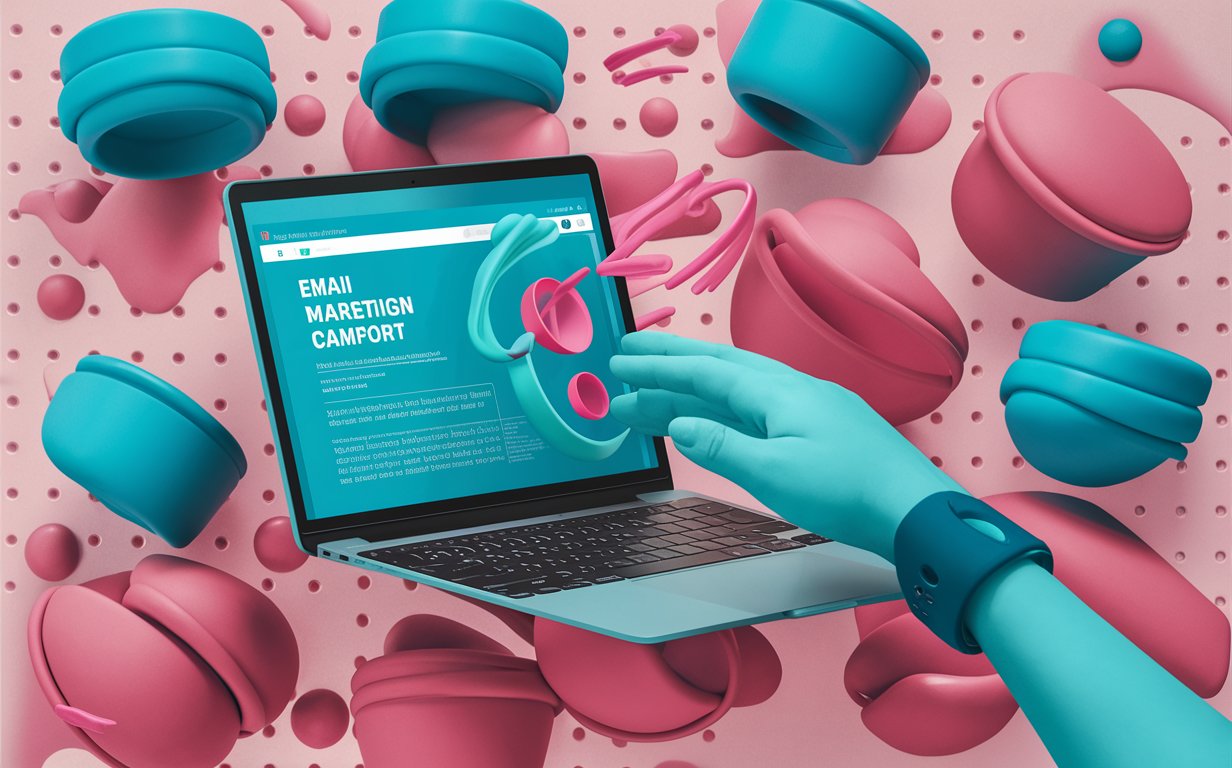In our increasingly digital world, securing our communications has never been more critical. Email encryption is a powerful tool that helps protect sensitive information from unauthorized access. How to send encrypted email? This article explores the ins and outs of encrypting email, detailing the different methods available and why it’s crucial for both personal and professional use. We’ll dive into how to send an encrypted email, the types of encryption available, and how to choose the right encryption options for your needs. Whether you’re using email in Outlook or another platform, understanding email encryption is essential for maintaining your privacy and security.
What Is Email Encryption and Why Is It Important?
Understanding Email Encryption
Email encryption is the process of converting the contents of an email message into a code that can only be decoded by the intended recipient. This process uses a combination of public and private keys to ensure that the message remains confidential and secure. The public key is used to encrypt the email, while the private key is used to decrypt it. This dual-key system ensures that only the recipient can access the contents of the email, even if it is intercepted during transmission.
The Importance of Encrypting Emails
In today’s world, we often exchange sensitive information via email, from personal details to business contracts. Without encryption, these communications can be easily intercepted and read by unauthorized parties. Encrypting emails adds a vital layer of security, protecting both the sender and recipient. It ensures that even if the email is intercepted, the contents remain confidential. This is particularly important for businesses handling sensitive client information or individuals concerned about privacy.
Common Uses for Encrypted Emails
Encrypted emails are commonly used in various situations, such as:
- Business Communications: Protecting sensitive business information from competitors or unauthorized access.
- Personal Privacy: Ensuring personal details like addresses, phone numbers, and financial information remain private.
- Legal and Medical Fields: Safeguarding client or patient information as required by law.
How to Send an Encrypted Email
Steps to Encrypt an Email in Outlook
To send an encrypted email in Outlook, follow these steps:
- Compose a New Email: Start by opening a new email message.
- Click the Lock Icon: In the options menu, click the lock icon to choose encryption settings.
- Select Encryption Options: You can select various encryption options depending on your needs. For example, you can encrypt the contents and attachments of all messages or choose to encrypt individual messages.
- Send the Message: Once your encryption settings are set, send the message. The recipient will receive an encrypted message that can only be decrypted with the appropriate private key.
Using Email Encryption Services
Various email encryption services can be used if you’re not using Outlook or want additional features. Services like PGP (Pretty Good Privacy) or S/MIME (Secure/Multipurpose Internet Mail Extensions) offer robust encryption options. These services require both the sender and recipient to have the necessary keys installed on their devices.
How Recipients Open Encrypted Emails
When a recipient receives an encrypted email, they will typically need to use a private key to decrypt the message. In some cases, email providers offer built-in decryption tools. For example, Outlook and other Microsoft services provide tools that automatically decrypt emails if the recipient has the proper credentials. If you’re using a third-party service, recipients may need to download and install specific software to view the message.
Types of Email Encryption
Symmetric vs. Asymmetric Encryption
There are two primary types of encryption: symmetric and asymmetric.
- Symmetric Encryption: Uses a single key for both encryption and decryption. This key must be shared securely between the sender and recipient. While faster and less resource-intensive, it can be challenging to manage key distribution securely.
- Asymmetric Encryption: Uses a pair of keys—a public key for encryption and a private key for decryption. This method is more secure as the private key is never shared, but it can be slower and require more computational power.
End-to-End Encryption
End-to-end encryption ensures that only the sender and recipient can read the contents of an email. Even the email provider cannot access the message, making it one of the most secure forms of email encryption. This method is ideal for transmitting highly sensitive information, as it guarantees that the message remains encrypted throughout the entire transmission process.
Transport Layer Security (TLS)
Transport Layer Security, or TLS, is a protocol that encrypts the connection between email servers. While not as secure as end-to-end encryption, TLS protects emails from being intercepted during transit. It’s widely used for its balance of security and convenience, making it a standard feature in most modern email providers.
How to Encrypt Email in Outlook
Setting Up Encryption in Office 365
Office 365 provides built-in encryption options for users. To set up encryption, navigate to the Office 365 admin center, where you can configure settings for your organization. Microsoft 365 Message Encryption is a feature that allows users to send encrypted messages easily. This feature integrates seamlessly with Outlook and other Microsoft products, providing a simple way to secure email communications.
Encrypting Emails in Outlook on Different Devices
Outlook offers encryption options across various devices, including desktops, tablets, and smartphones. Whether you’re using Outlook on Windows, macOS, or mobile devices, the process is generally the same. Compose a new email, click the lock icon, and select your encryption options. This consistency across devices ensures that you can securely send emails regardless of where you are.
Common Issues and Solutions
So, How to send encrypted email? Some common issues users encounter when trying to encrypt email in Outlook include difficulty setting up keys or recipients being unable to open encrypted messages. If you’re experiencing these issues, Microsoft Support and Microsoft Community are excellent resources for troubleshooting. They offer guides, forums, and customer support to assist you with encryption challenges.
Choosing the Right Email Encryption Services
What to Consider When Selecting a Service
When choosing an email encryption service, consider factors such as ease of use, compatibility with your existing email provider, and the level of security offered. Some services require more technical expertise to set up, while others, like built-in options in Outlook, are more user-friendly.
Popular Email Encryption Services
Popular email encryption services include PGP, S/MIME, and various third-party providers. PGP is known for its robust security features, making it a popular choice among tech-savvy users. S/MIME offers a balance of security and ease of use, making it suitable for both personal and business communications. Third-party providers often offer additional features, such as secure storage and management of encryption keys.
How to Set Up and Use These Services
Setting up and using email encryption services typically involves installing software and generating encryption keys. For example, with PGP, you need to create a public and private key pair, share your public key with contacts, and import their public keys to send encrypted messages. S/MIME usually requires obtaining a digital certificate, which can be used to sign and encrypt emails.
Understanding Email Security
Why Is Email Security Important?
Email security is crucial because email is a primary method of communication for both personal and business matters. It’s often used to send sensitive information, such as financial details, personal identification numbers, and confidential business plans. Without proper security measures, these communications can be intercepted and misused.
Best Practices for Securing Your Email
To secure your email, follow these best practices:
- Use Strong Passwords: Ensure your email accounts have strong, unique passwords.
- Enable Two-Factor Authentication: This adds an extra layer of security by requiring a second form of verification.
- Regularly Update Software: Keep your email clients and encryption tools up-to-date to protect against vulnerabilities.
- Be Cautious with Attachments: Avoid opening suspicious email attachments, as they can contain malware.
- Verify Recipients: Double-check the recipient’s email address to ensure sensitive information is sent to the right person.
How Encryption Enhances Email Security
Encryption enhances email security by ensuring that only the intended recipient can access the message’s contents. Even if an email is intercepted, the encryption ensures that the message remains unreadable without the appropriate key. This makes encryption an essential tool for maintaining the confidentiality and integrity of email communications.
Common Mistakes and How to Avoid Them
Failing to Use Encryption for Sensitive Emails
One common mistake is not using encryption when sending sensitive information. Without encryption, emails can be intercepted and read by unauthorized parties. Always use encryption for emails containing personal, financial, or confidential information.
Using Outdated Encryption Methods
Another mistake is relying on outdated encryption methods that may no longer be secure. Stay updated with the latest encryption standards and practices. For example, while older versions of PGP may still work, newer protocols and tools offer enhanced security features.
Sharing Encryption Keys Insecurely
So, How to send encrypted email? Some users mistakenly share their private keys or do not securely manage their public keys. Private keys should never be shared, and public keys should be shared through secure channels. This ensures that only the intended recipient can decrypt the email.
Overlooking the Importance of Email Provider Security
Not all email providers offer the same level of security. When choosing an email provider, consider their encryption protocols, data storage practices, and reputation for security. Some providers may not support advanced encryption methods, making it crucial to select a provider that meets your security needs.
Ignoring Microsoft Support and Community Resources
Finally, many users overlook the resources available through Microsoft Support and the Microsoft Community. These platforms offer valuable information and assistance for setting up and troubleshooting encryption. Utilizing these resources can help you navigate any issues and ensure that your email communications are secure.
Future Implications of Email Encryption
The Evolving Landscape of Email Security
As cyber threats continue to evolve, the landscape of email security is likely to change. We may see more advanced encryption algorithms and tools become standard as the need for secure communication grows. The increasing use of artificial intelligence and machine learning could also lead to more sophisticated encryption methods, providing even greater security.
The Role of AI in Email Encryption
Artificial intelligence has the potential to play a significant role in the future of email encryption. AI algorithms could help detect and respond to security threats more quickly, offering real-time protection for sensitive communications. Additionally, AI could assist in managing encryption keys, making it easier for users to secure their emails without requiring in-depth technical knowledge.
The Growing Importance of User Awareness
As technology advances, user awareness and education about email security will become increasingly important. Users need to understand the importance of encryption and how to use it effectively. This includes knowing when to encrypt an email, how to manage encryption keys, and staying informed about the latest security threats and best practices.
Myth Busting: Common Misconceptions About Email Encryption
Myth 1: “Encrypting All Messages Is Overkill”
Many people believe that encrypting all messages is unnecessary and only needed for highly sensitive information. However, encrypting all messages can be a good idea because it ensures that even seemingly trivial emails are protected. While not every message contains confidential data, keeping a consistent habit of encryption can prevent accidental exposure of sensitive information. It’s a preventive measure that secures your communication ecosystem, much like locking all doors, not just the front door.
Myth 2: “Encryption Is Too Complex for Everyday Use”
Another common myth is that email encryption is too complicated and requires third-party services to encrypt messages. While it’s true that there are additional steps involved, modern email services, including many email service apps, have made it increasingly user-friendly. For instance, services like Yahoo Mail offer built-in encryption options, and email providers and devices like Outlook provide straightforward settings to encrypt email messages. It’s a misconception that only tech-savvy individuals can navigate these features. In reality, most services offer simple, guided processes to help users send or receive encrypted emails without needing advanced technical knowledge.
Myth 3: “If the Message Is Encrypted, Only the Recipient Can Read It”
So, How to send encrypted email? While it’s true that encryption secures the contents of an email, it’s a misconception that if a message is encrypted, only the intended recipient can access it. In some scenarios, encryption keys may be stored in a way that allows service providers or even attackers, under certain conditions, to access the contents. For true privacy, end-to-end encryption is crucial, where only the sender and receiver hold the keys to decrypt the message. Moreover, the type of encryption used and the policies of the secure email service play a significant role in determining who can be able to open and read the message. Always ensure you’re using a trusted service and understand the level of security it provides.
Expert Comment by Dr. Evelyn Mathis
“One of the most critical considerations when sending an email is determining whether to sign or encrypt the message. In my experience, it’s always a good idea to encrypt emails containing sensitive information. The process is straightforward: when you write a message, you can easily pick the encryption option that suits your needs. For example, using a public key to encrypt ensures that only the intended recipient can receive an email and read it.
When using services like Yahoo Mail, which uses SSL (Secure Sockets Layer), the data is protected during transit. However, for added security, it’s recommended to encrypt contents and attachments directly. This can be done by using programs designed to encrypt the message itself, offering an additional encryption layer. Remember, whether you send and receive emails via a secure service or not, you should be mindful of how you handle emails sent with sensitive content.
It’s also crucial to choose to either encrypt or remove individual messages by selecting the appropriate settings in your email client. For example, you can encrypt or remove individual messages by setting up rules or messages by selecting more options in the settings. This way, you can ensure that only specific messages or add a digital signature to confirm the authenticity and integrity of your emails. Ultimately, how well you want your emails secured will depend on your specific needs and the level of confidentiality required for the communication.”
Future Implications
As digital communication continues to evolve, the landscape of email encryption is set to become more complex and sophisticated. We may see the development of standardized protocols across different email platforms, making it easier for users to send encrypted email via various providers seamlessly. There could also be advancements in user-friendly programs to encrypt emails, allowing even those with minimal technical expertise to secure their messages.
With increasing awareness of data privacy, it might become standard practice to need to send someone an encrypted message, especially for sensitive communications. Moreover, services that currently lack strong encryption, like how Yahoo uses SSL, may adopt more robust measures to ensure that only intended recipients are able to read your message. Innovations such as visual indicators at the top of a message could also emerge, signaling to users the encryption status of their emails, thereby enhancing trust and security.
Conclusion on How to send encrypted email
Email encryption is a vital tool for protecting sensitive information and ensuring the privacy of your communications. Whether you’re using Outlook, a third-party service, or another email provider, understanding how to encrypt email is essential for maintaining security. By following best practices and staying informed about the latest developments in email security, you can safeguard your emails and protect your personal and professional information.
Key Takeaways
- Email Encryption: Essential for protecting sensitive information from unauthorized access.
- Types of Encryption: Symmetric, asymmetric, and end-to-end encryption offer varying levels of security.
- Setting Up Encryption: Available across different platforms and devices, including Outlook and third-party services.
- Common Mistakes: Avoid failing to encrypt sensitive emails, using outdated methods, and insecurely managing keys.
- Future Trends: AI and advanced encryption methods will continue to shape the future of email security.
By taking the time to understand and implement email encryption, you can ensure that your communications remain private and secure. Whether for personal use or in a business setting, encrypting your emails is a crucial step in protecting your information in today’s digital world.




